Three billion years ago, Earth was a very different place.
-
New Findings of Early Life on Earth Date Back 3.77 Billion Years
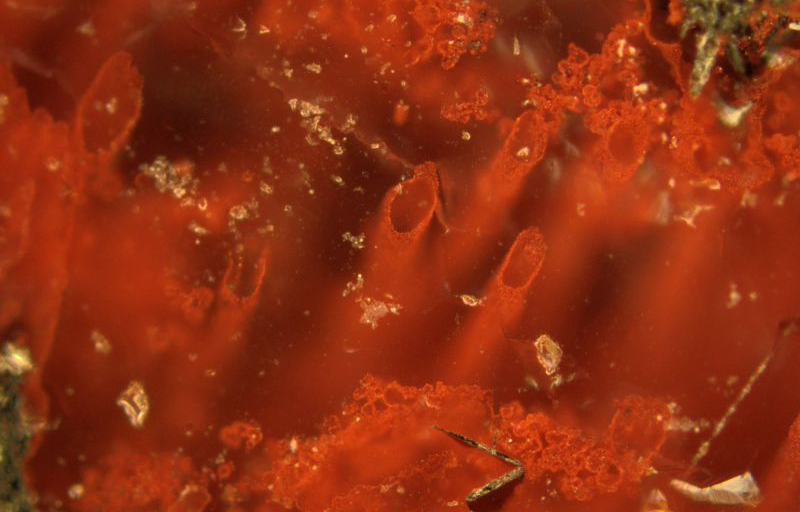
A reconstructed image of hematite tubes from microfossils discovered in hydrothermal vent precipitates dating back to at least 3,770 million years ago. Source: M. DoddResearchers have determined that fossilized evidence of bacteria from ancient seafloor hydrothermal vent precipitates found in the Nuvvuagittuq belt in Quebec, Canada is at least 3.77 billion years old (or even as much as 4.28 billion years old). The minimum age of the fossils would make them the oldest indication of life on Earth so far.
Lead authors Matthew Dodd and Dominic Papineau with their team analyzed jasper rock samples, finding microfossils of filaments and tubes filled with hematite, the mineral form of ferric oxide or rust, similar to the remains of modern day microbes living around hydrothermal ...
Source: [Nature]
March 03, 2017 • Written by: Miki Huynh • Report issue
-
It Takes a Village to Model a Planet

The Virtual Planetary Laboratory investigates the potential habitability of extrasolar planets. The research will help in predicting the habitability of discovered bodies like the Earth-size planets orbiting TRAPPIST-1. Image source: NASAWith the exciting recent discoveries of planets orbiting TRAPPIST-1 and Proxima Centauri, interest in exoplanets is on the rise, and the Virtual Planetary Laboratory (VPL), the NASA Astrobiology Institute team based at the University of Washington, is poised to help the science community better predict which exoplanets might be able to support life and serve as ideal targets for future missions.
VPL studies what factors affect habitability and what observable characteristics of a planet point to signs of life (and what might also misdirect us) using field and lab experiments and computational models. An article published at Now.space ...
Source: [Now.space]
March 02, 2017 • Posted by: Miki Huynh • Report issue
-
Does Pluto Have The Ingredients For Life?
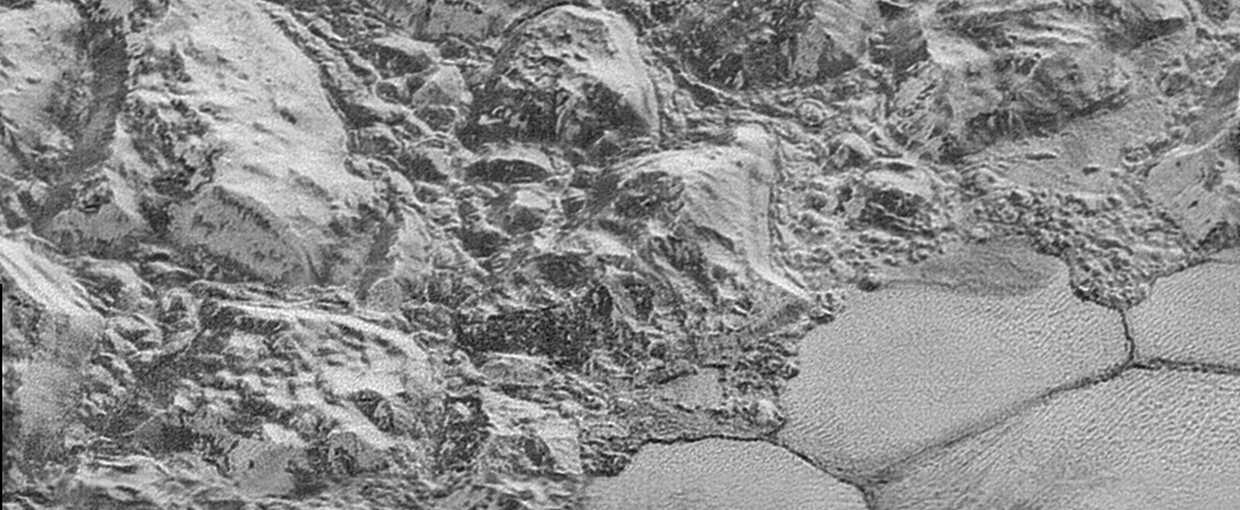
One of the surprises of the New Horizons mission was finding water ice mountains on Pluto, that quite possibly are floating on a subsurface ocean of liquid water.Pluto has long been viewed as a distant, cold and mostly dead world, but the first spacecraft to pass by it last year revealed many surprises about this distant dwarf planet.
Data from the New Horizons flyby finished downloading to Earth in October, and while it will take many years for scientists to complete their inventory and model the results, early studies offer intriguing hints of its complex chemistry, perhaps even some form of pre-biological processes below Pluto’s surface. Complex layers of organic haze; water ice mountains from some unknown geologic process; possible organics on the surface; and a ...
Source: [astrobio.net]
February 28, 2017 • Written by: Elizabeth Howell • Report issue
-
NASA Astrobiology Institute Cooperative Agreement Notice Cycle 8 Released
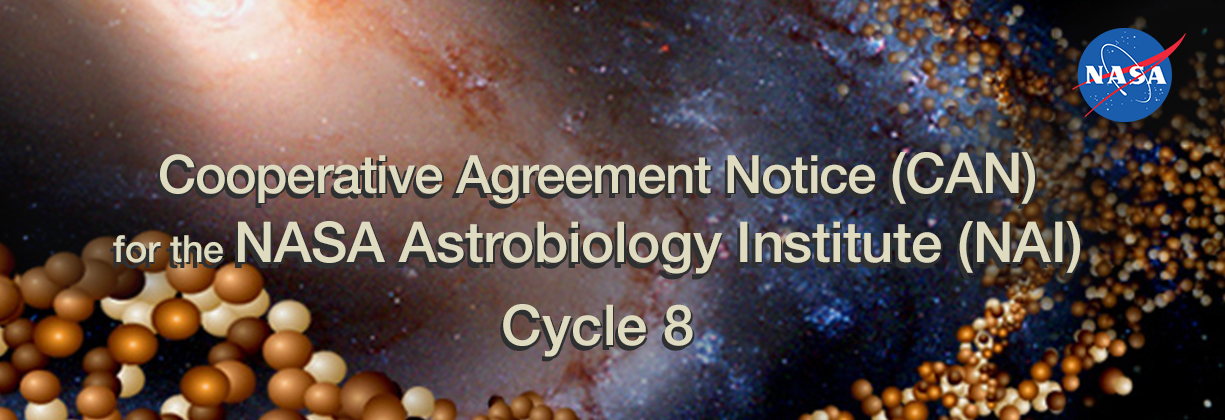
The NASA Astrobiology Institute CAN 8 has been released. Step-1 Proposals are due April 12, 2017.Solicitation Number: NNH17ZDA003C
CAN Release Date: February 27, 2017
Step-1 Proposal Due: April 12, 2017
Step-2 Proposals Due: July 6, 2017The National Aeronautics and Space Administration (NASA) Science Mission Directorate has released a Cooperative Agreement Notice (CAN) soliciting team-based proposals for membership in the NASA Astrobiology Institute (NAI).
The goal of CAN Cycle 8 is to maintain a multidisciplinary institute by selecting focused, interdisciplinary teams that complement without replicating the strengths of the continuing teams. The teams selected in Cycle 8 will replace the teams selected in Cycle 6, whose five-year Cooperative Agreements are expiring.
The CAN for Cycle ...
February 27, 2017 • Written by: NASA Science Mission Directorate • Report issue
-
Selection of NASA Postdoctoral Program Fellows from the November 2016 Opportunity

The NASA Astrobiology Program is pleased to announce the selection of three new 2016 NASA Postdoctoral Fellows:
Timothy Bowling
Advisor: Simone Marchi, U Colorado Boulder (Habitable Worlds)
Topic: Modeling the Origin and Evolution of Habitable Environments in Post-Impact Hydrothermal Systems Beneath Martian CratersMackenzie Day
Advisor: David Catling, University of Washington (Habitable Worlds)
Topic: Habitability of ancient martian dunesMoran Frenkel-Pinter
Advisor: Loren Williams, Georgia Institute of Technology (Exobiology: Prebiotic Evolution)
Topic: Prebiotic Self-Assembly of plausible proto-depsipeptidesCongrats to our new Fellows! More information about the NASA Astrobiology Postdoctoral Program is available at: http://nai.nasa.gov/funding/postdoctoral-fellowship-program/.
Source: [NASA Astrobiology Postdoctoral Program]
February 24, 2017 • Posted by: Miki Huynh • Report issue
-
NASA Telescope Reveals Largest Batch of Earth-Size, Habitable-Zone Planets Around a Single Star
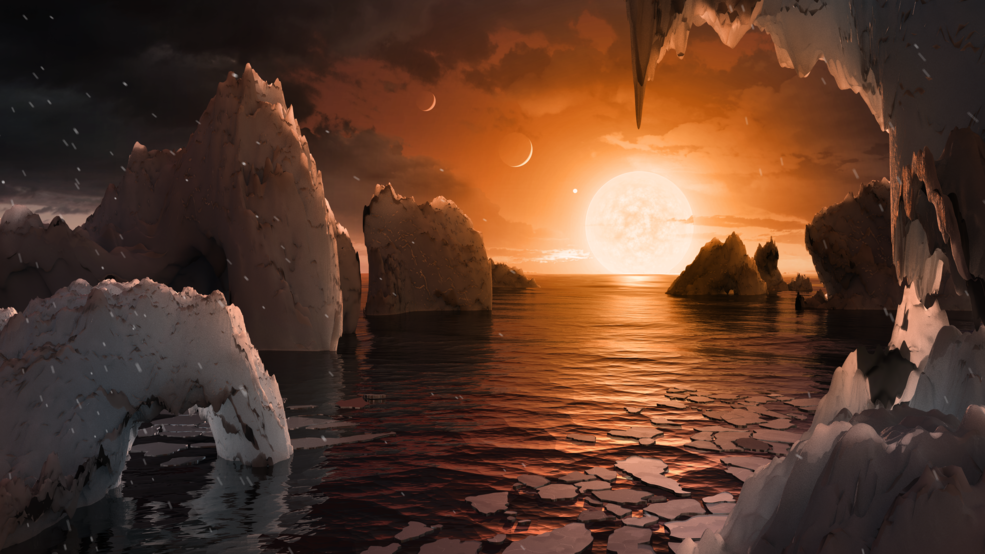
This illustration shows the possible surface of TRAPPIST-1f, one of the newly discovered planets in the TRAPPIST-1 system. Scientists using the Spitzer Space Telescope and ground-based telescopes have discovered that there are seven Earth-size planets in the system. Credits: NASA/JPL-CaltechNASA’s Spitzer Space Telescope has revealed the first known system of seven Earth-size planets around a single star. Three of these planets are firmly located in the habitable zone, the area around the parent star where a rocky planet is most likely to have liquid water.
The discovery sets a new record for greatest number of habitable-zone planets found around a single star outside our solar system. All of these seven planets could have liquid water – key to life as we know it – under the right atmospheric conditions, but the chances are highest with the three in the habitable ...
Source: [NASA]
February 22, 2017 • Written by: NASA • Report issue
-
High-Altitude Water Acts as an Atmospheric Escape Route for Martian Hydrogen

Hydrogen in Mars’ upper atmosphere comes from water vapor in the lower atmosphere. An atmospheric water molecule can be broken apart by sunlight, releasing the two hydrogen atoms from the oxygen atom that they had been bound to. Several processes at work in Mars’ upper atmosphere may then act on the hydrogen, leading to its escape. Image source: NASA/GSFC; CU/LASPResearchers at the University of Colorado, Boulder Laboratory for Atmospheric and Space Physics (LASP) have discovered an atmospheric escape route for hydrogen on Mars, a mechanism that may have played a significant role in the planet’s loss of liquid water.
The findings describe a process in which water molecules rise to the middle layers of the planet’s atmosphere during warmer seasons of the year and then break apart, triggering a large increase in the rate of hydrogen escape from the atmosphere to space in a span of just weeks.
The study, which appears in the journal Nature Geoscience ...
Source: [University of Colorado, Boulder]
February 21, 2017 • Written by: University of Colorado, Boulder • Report issue
-
Extreme Phosphorus Scarcity and Its Grip on Ancient Life

Scientists assemble data from shale samples worldwide ranging as far back as 3 billion years old to trace the levels (and scarcity) of phosphorus in Earth's ancient oceans. Image source: Wikimedia CommonsLife’s list of essential nutrients is long, but carbon, nitrogen, and phosphorus are the big three. Carbon and nitrogen, both easily extracted from the atmosphere, have usually been in ample supply in the ocean over Earth’s history. Carbon dioxide readily dissolves in seawater, and that carbon is then converted to the molecules of life through photosynthesis. Nitrogen is nearly 80 percent of the air we breathe, and diverse microorganisms are able to convert nitrogen to compounds more widely useful to life.
Phosphorus is much harder to get: it must be delivered to the oceans by rivers fed through ...
Source: [UC Riverside]
February 16, 2017 • Written by: Sean Nealon • Report issue
-
Meteorite Points to 2 Billion Years of Volcanic Activity on Mars
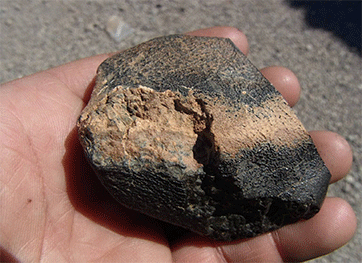
Analysis of Martian meteorite NWA 7635 dates it at 2.4 billion years old. Image source: University of HoustonScientists have confirmed the long-lived nature of volcanoes on Mars, finding meteoric evidence that a Martian volcano or volcanic system was active for over 2 billion years.
A Mars meteorite, a shergottite rock called Northwest Africa (NWA) 7635 originally discovered in Algiers in 2012, was analyzed by Tom Lapen, a geology professor at the University of Houston, with members of the NASA Astrobiology Institute team based at the University of Wisconsin. NWA 7635 is one of eleven Martian shergottites that have been discovered on Earth, sharing similar chemical composition which points to a similar location of origin and time of ...
Source: [University of Houston]
February 09, 2017 • Posted by: Miki Huynh • Report issue
-
The Search for Mars Biosignatures Up at High Altitudes
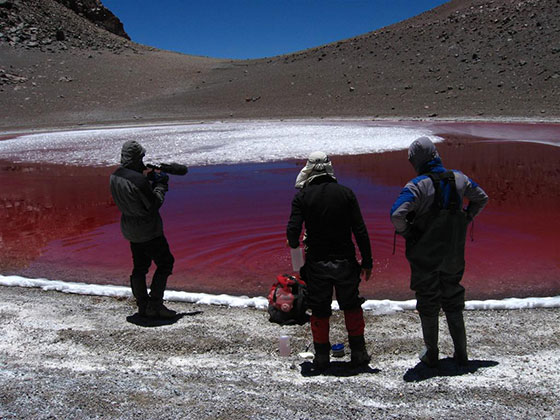
Summit of the Simba volcano (19,400 ft) – The summit crater lake is shallow and its water column completely transparent. The red color of the lake is from an algae that has developed special pigments in response to extreme levels of short wavelength (UVA and UVB) radiation. Source: SETI Institute/ NAI High Lakes ProjectFrom October through November 2016, Nathalie Cabrol, director of the Carl Sagan Center at the SETI Institute, with members of the NASA Astrobiology Institute team based at SETI, went on a month-long expedition to Chile, visiting Mars-analogue sites between 800 and 6,000 km above sea level to collect samples and test in situ instruments in preparation for the Mars 2020 and ExoMars science payloads.
Photos and posts from the field sites written by Nathalie Cabrol are available at the SETI institute website, and are linked to below.
The Search for Biosignatures on Mars Starts High on Earth: http://www ...
Source: [SETI]
February 07, 2017 • Posted by: Miki Huynh • Report issue
-
UC Riverside Science Lecture Series: Are We Alone?

UC Riverside 2016-2017 Science Lecture Series, Are We Alone?, presents monthly topics about the search for life in the Universe and what it means for humanity. Source: UC RiversideThe University of California, Riverside has a lecture series entitled Are We Alone?, discussing the search for life in the universe—from analyzing our cosmic origins and early Earth analogues, to exploring Mars, icy moons, and other Earth-like planets. Presenters include members of the NASA Astrobiology Institute (NAI) Alternative Earths team.
The next installment in the series will be “Mars 2020 & Beyond: Will We Find Life on the Red Planet?” presented by Ken Williford, Deputy Project Scientist, Mars 2020 Mission and Director, Astrobiogeochemistry Laboratory, NASA Jet Propulsion Laboratory. The lecture takes place March 23, 2017, 6-7:30PM PST ...
Source: [UC Riverside]
February 01, 2017 • Posted by: Miki Huynh • Report issue
-
Delay Announced for the NASA Astrobiology Institute Cooperative Agreement Notice (CAN 8)

Release of the NASA Astrobiology Institute CAN 8 has been delayed to February 2017. Stay tuned!The NASA Science Mission Directorate Planetary Science Division intends to release a Cooperative Agreement Notice (CAN) soliciting team-based proposals for membership in the NASA Astrobiology Institute (NAI) in February 2017.
Step-1 proposals will be due ~8 weeks after the final CAN release, and Step-2 proposals will be due ~18 weeks after the CAN release. A preproposal conference will be scheduled ~2 weeks after the CAN release.
Questions and comments related to this announcement should be addressed to Mary Voytek, NASA Astrobiology Institute Program Scientist, at mary.voytek-1@nasa.gov.
January 31, 2017 • Written by: NASA Science Mission Directorate • Report issue
-
Thermal Variation and Habitability of the Earth's Seafloor

A map showing the thickness of sediment (in meters) for a temperature range under 80 degrees Celsius. Source: Amend and LaRoweOur Earth is about 70% covered in ocean, and the seafloor is a blanket of unconsolidated sediment made up of a wide range of organic matter, minerals, and chemistries. The habitable portions of ocean sediment provide living space for an estimated 3×1029 microbial cells.
Scientists with the NASA Astrobiology Institute (NAI) Life Underground team based at the University of Southern California have used data on global sediment thickness, ocean depth, heat flow, and bottom water temperatures to developed a model to calculate the three-dimensional distribution of temperature in sediments.
The research, “Temperature and volume of global marine sediments ...
Source: [Geology]
January 30, 2017 • Posted by: Miki Huynh • Report issue
-
Penelope Boston on Subsurface Astrobiology: Cave Habitat on Earth, Mars, and Beyond
In the summer of 2016, Penny Boston, Director of the NASA Astrobiology Institute (NAI), presented the seminar, Subsurface Astrobiology: Cave Habitat on Earth, Mars, and Beyond at NASA Ames Research Center in Mountain View, CA. She talked about her past work exploring and studying caves around the world, where the extreme subsurface conditions and the discovered microbial life forms held possible clues for future Mars exploration and the search for life in our solar system.
Boston’s talk is part of the annual NASA Ames Summer Series, which invites subject leaders from around the world to present science and technology discoveries ...
Source: [NASA Ames Summer Series]
January 27, 2017 • Posted by: Miki Huynh • Report issue
-
An Introduction to the 2016-2017 Blumberg NASA/Library of Congress Chair in Astrobiology

Luis Campos is the 2016-2017 Baruch S. Blumberg NASA/Library of Congress Chair in Astrobiology.Luis Campos, science historian and the current Baruch S. Blumberg NASA/Library of Congress Chair in Astrobiology, was interviewed by Dan Turello at the Kluge Center, where Campos will spend his one year residency as Chair. The conversation is available at the Library of Congress blog.
Campos talked about how his interests and academic path led up to the position of Astrobiology Chair, giving details about his childhood inspirations and college and graduate work that incorporated both science and the humanities.
Campos discussed his book, Radium and the Secret of Life, which explores how the discovery of the radioactive element ...
Source: [Library of Congress]
January 24, 2017 • Written by: Miki Huynh • Report issue



